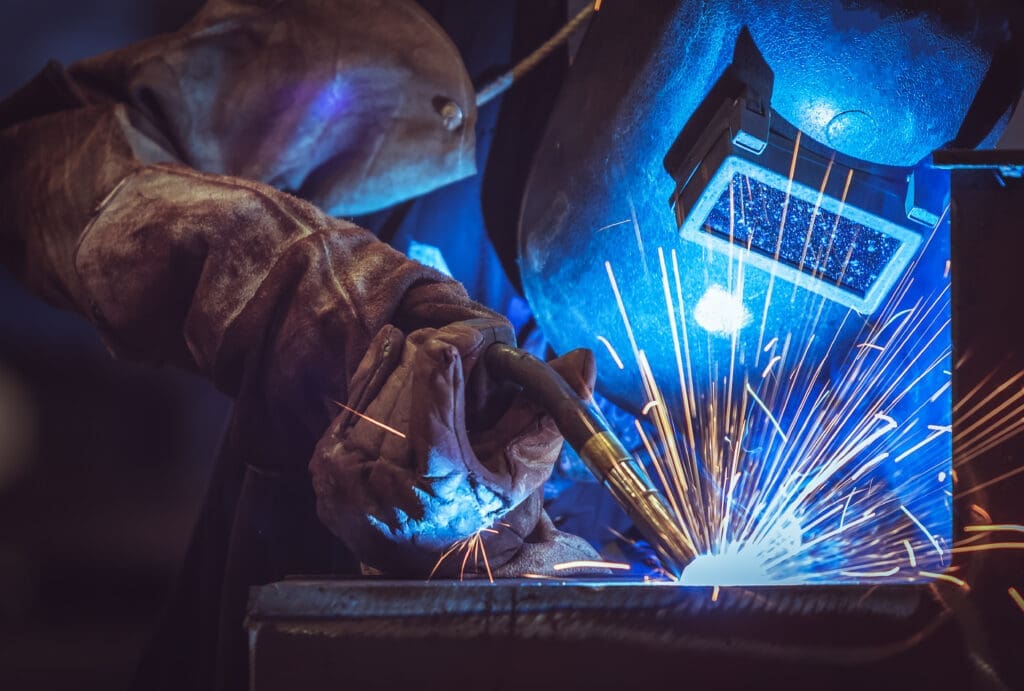Few processes have the power to shape raw metal into strong, functional equipment, quite like welding fabrication. Whether it’s supporting the structure of a building, driving industrial machinery, or forming complex metal components, welding is a cornerstone of modern fabrication. It blends craftsmanship with science to deliver precision and durability to meet today’s industries’ demands.
If you’re striving for longer-lasting equipment, cleaner lines, or seamless connections in your final product, welding fabrication can be the difference between average and exceptional. Let’s explore how this method enhances both precision and strength in metal components and what it takes to get it right.
How Welding Supports the Metal Fabrication Process
At its essence, welding fabrication combines metal parts using high heat, pressure, or both. It plays a defining role in metal fabrication, including cutting, bending, forming, and assembling. While other stages shape the material, welding combines it with permanent bonds that withstand time, pressure, and external conditions.
Processes such as arc welding, MIG, TIG, and flux-cored welding allow fabricators to tailor their approach based on material thickness, function, and load requirements. These methods are selected not just for strength but also for compatibility with specific metals and configurations. In the past, welding relied heavily on the eye and hand of the craftsman. Today, computer-aided systems ensure repeatability, tight tolerances, and improved quality from start to finish.
Precision Is More Than Aesthetic
When it comes to equipment functionality, precision is critical. Even the slightest misalignment or imperfection can lead to long-term performance issues in welded assemblies. Vibrations, load imbalances, and stress concentrations are often the result of poor welds or positioning errors.
Modern welding fabrication eliminates these risks by using laser-guided tools, CAD software, and real-time measurement systems that ensure metal parts are joined accurately. Each weld is applied carefully to temperature control, depth, and consistency. These details matter not only for appearance but for structural reliability.
By integrating precision into every stage of welding, fabricators reduce the likelihood of errors during quality control inspections and increase the efficiency of final assembly.
Building Equipment That Stands the Test of Time
Strong welds mean stronger equipment. In fabrication, strength is measured not just by how much a component can bear but by how long it can continue to do so under stress, temperature fluctuations, or environmental wear.
Welding fabrication enhances strength by creating seamless connections that outperform bolted or riveted joints in many applications. Arc welding, in particular, is favored for its deep penetration and reliable bond in heavy-duty environments.
Each weld must be tailored to the base metal, load path, and stress conditions it will encounter. This is where skilled technique meets careful planning. Welders must select appropriate filler metals, heat inputs, and joint designs to ensure maximum durability. Thorough quality control checks, including non-destructive testing like X-ray or ultrasonic inspection, confirm the integrity of each weld before the product moves to the next phase.
What Are Some Advancements in Welding Technology?
Technology has elevated welding from a hands-on skill to a digitally optimized process. Fabricators now use computer-aided modeling to visualize and simulate weld paths, identify potential stress points, and reduce the risk of failure before the welding begins.
Automation plays a major role in boosting accuracy and consistency. Robotic welding arms programmed with exact movements allow high-volume projects to maintain uniform welds from part to part. These systems control bead width, penetration depth, and gas shielding conditions more precisely than manual methods.
Monitoring systems collect real-time data to adjust settings instantly, minimizing variations and ensuring each weld meets strength and design requirements. This combination of tech and technique produces high-quality results and reduces rework.
What Is The Role of Quality Control in Fabricated Equipment?
While precision tools and automated systems play a vital role, hands-on quality control is still essential. From pre-weld inspections to final evaluations, the fabricator reviews each step of the metal fabrication process for defects, inconsistencies, or deviations from specifications.
This includes visual inspections, stress tests, and non-destructive techniques that examine weld depth and uniformity without damaging the part. Documentation and compliance with relevant codes and certifications confirm that the final product is safe, reliable, and ready for use in critical applications.
Metal manufacturers that emphasize quality throughout their process build trust with clients and establish a reputation for reliable craftsmanship.
Partner With Brandywine Valley Fabricators for Exceptional Results
At Brandywine Valley Fabricators, we specialize in welding fabrication that delivers strength and precision. Our team combines time-tested skills with cutting-edge technology to create high-performance metal components that exceed expectations under pressure. From detailed CAD planning to rigorous inspections, we focus on producing durable, high-quality equipment built for your exact needs.
Looking to enhance your next fabrication project? Contact Brandywine Valley Fabricators today to learn how our expert welding services can support your goals.

